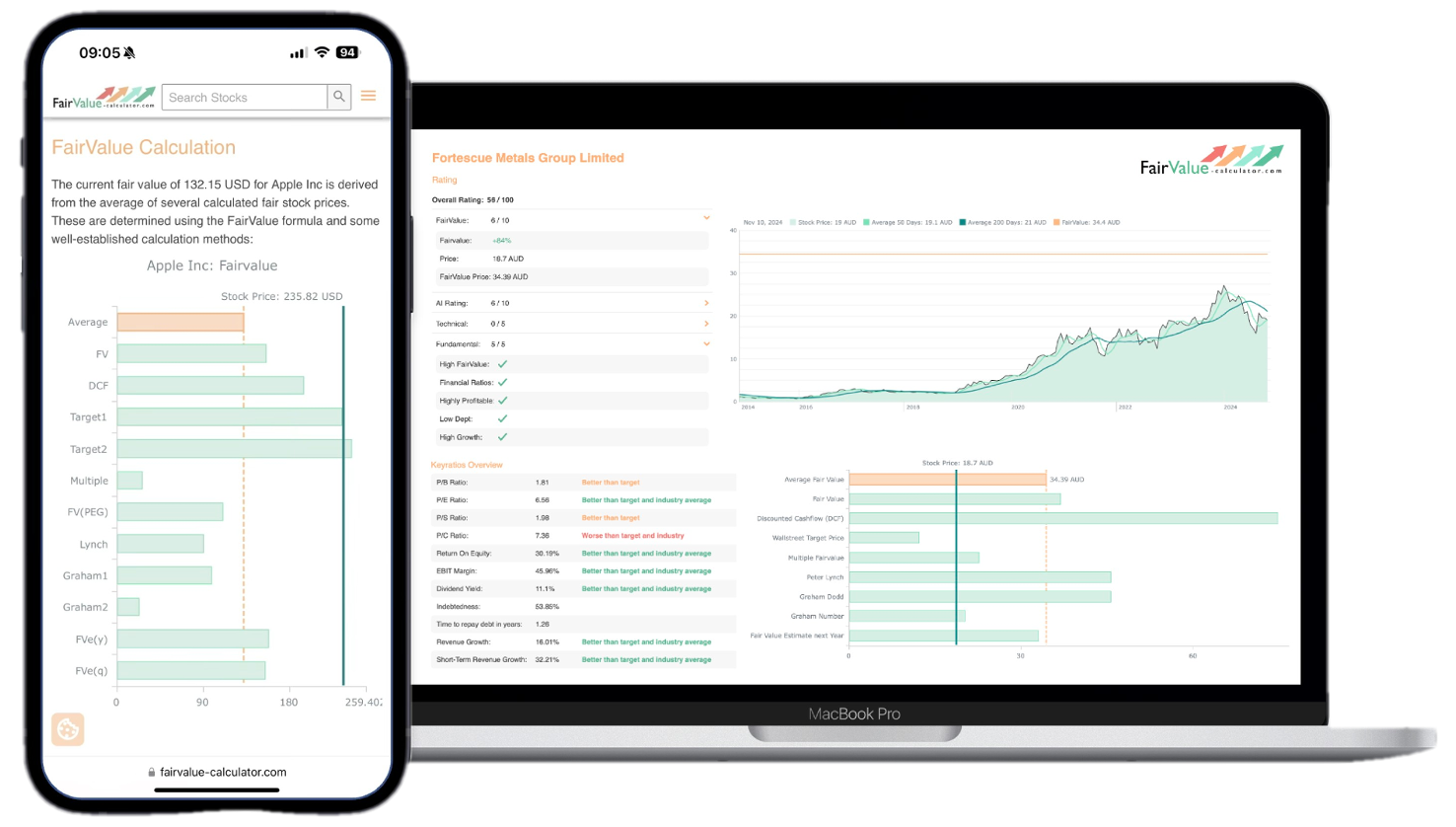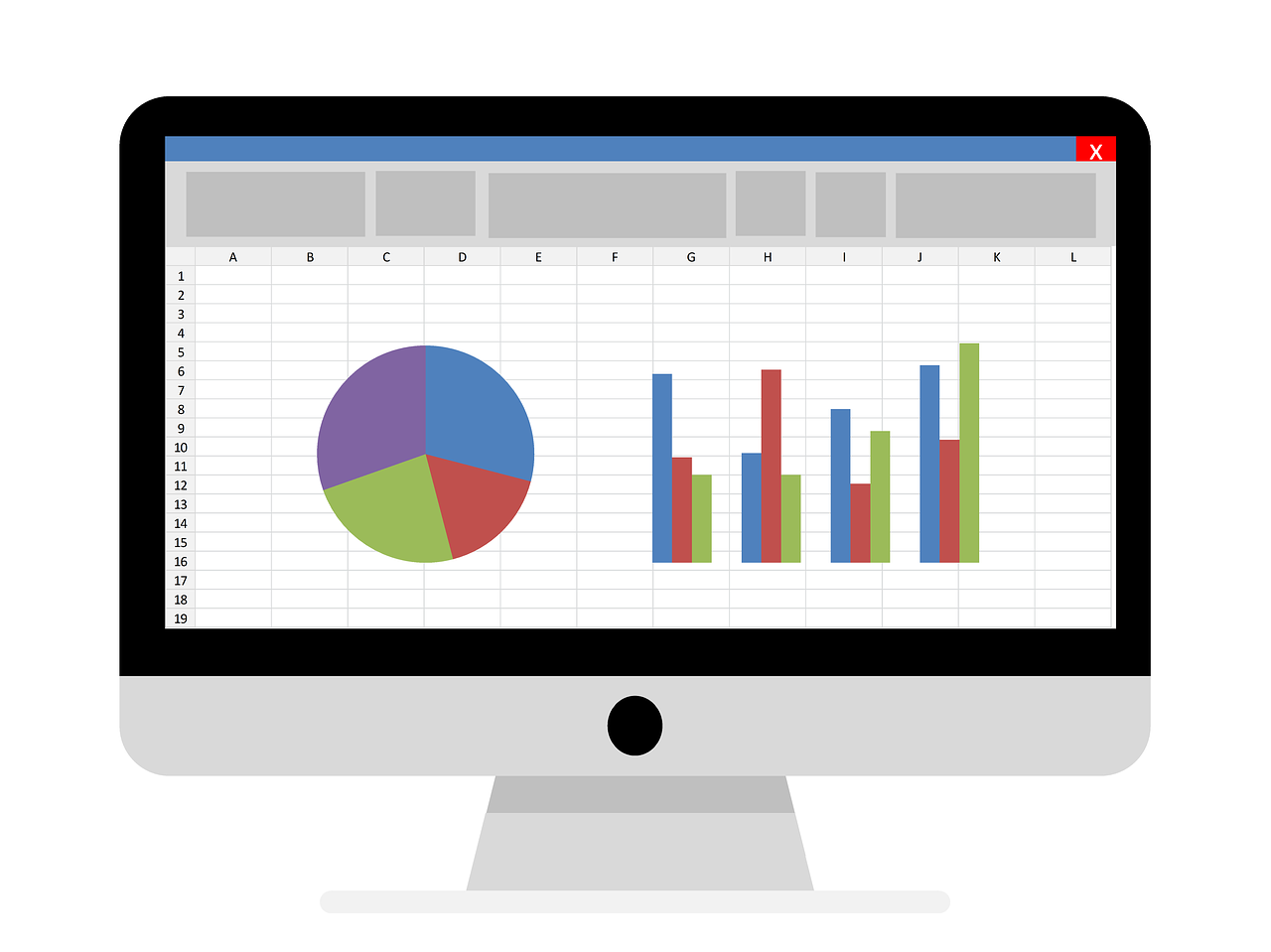Navigating the financial markets can feel like deciphering a complex foreign language, but there’s one concept that acts as a universal translator: fair market value. Imagine unlocking a treasure chest filled with potential investment opportunities, each evaluated accurately, now that’s the power fair market value holds. It doesn’t merely offer a glimpse into an asset’s worth; it provides a compass for making informed and strategic investment decisions. In this guide, we’re diving deep into how you can leverage fair market value to sharpen your investment acumen and take your financial portfolio to new heights.
Understanding fair market value isn’t just for Wall Street analysts or seasoned investors; it’s a vital tool for anyone looking to make intelligent and calculated moves in the stock market. Whether you’re a novice eager to learn the ropes or an experienced investor aiming to hone your strategies, grasping this concept can set you apart. From evaluating stocks to determining the true value of real estate, the principles of fair market value weave a thread of clarity through the complexities of investing. So, buckle up for an enlightening journey that will empower you with the wisdom to spot genuine investment opportunities and dodge costly pitfalls.
💡 Discover Powerful Investing Tools
Stop guessing – start investing with confidence. Our Fair Value Stock Calculators help you uncover hidden value in stocks using time-tested methods like Discounted Cash Flow (DCF), Benjamin Graham’s valuation principles, Peter Lynch’s PEG ratio, and our own AI-powered Super Fair Value formula. Designed for clarity, speed, and precision, these tools turn complex valuation models into simple, actionable insights – even for beginners.
Learn More About the Tools →🚀 Test the Fair Value Calculator Now!
Find out in seconds whether your stock is truly undervalued or overpriced – based on fundamentals and future growth.
Try it for Free →The Fundamentals of Fair Market Value
At its core, fair market value represents the price at which an asset would change hands between a willing and informed buyer and a willing and informed seller, both acting without undue pressure. This foundational concept establishes a baseline for comparing investment opportunities, from publicly traded stocks to private real estate deals. By adhering to the fair market value framework, investors ensure they base decisions on objective metrics rather than emotions or biased appraisals.
Key elements underpinning fair market value include market conditions, the intrinsic characteristics of the asset, and comparable transactions. Market conditions encompass demand-supply dynamics, economic outlook, and regulatory factors. Intrinsic characteristics refer to specific features such as asset quality, location, growth potential, or dividend yield. Comparable transactions draw data from recent sales or listings of similar assets to gauge prevailing market prices. Together, these elements create a robust structure for valuation that’s transparent and reproducible, critical for investors seeking consistency and reliability in their analyses.
Explore our most popular stock fair value calculators to find opportunities where the market price is lower than the true value.
- Peter Lynch Fair Value – Combines growth with valuation using the PEG ratio. A favorite among growth investors.
- Buffett Intrinsic Value Calculator – Based on Warren Buffett’s long-term DCF approach to determine business value.
- Buffett Fair Value Model – Simplified version of his logic with margin of safety baked in.
- Graham & Dodd Fair Value – Uses conservative earnings-based valuation from classic value investing theory.
- Intrinsic vs. Extrinsic Value – Learn the core difference between what a company’s really worth and what others pay.
- Intrinsic Value Calculator – A general tool to estimate the true value of a stock, based on earnings potential.
- Fama-French Model – For advanced users: Quantifies expected return using size, value and market risk.
- Discount Rate Calculator – Helps estimate the proper rate to use in any DCF-based valuation model.
Importance of Fair Market Value in Investing
Fair market value serves as a crucial benchmark for making sound investment choices. It helps investors avoid overpaying for assets during market exuberance and underestimating opportunities in downturns. When you rely on fair market value, you ground your decisions in objective data, reducing emotional biases such as fear and greed. This disciplined approach makes it easier to adhere to your investment strategy, whether that involves value investing, dividend growth, or real estate flipping.
Moreover, fair market value underpins regulatory compliance and tax reporting. For example, the U.S. Internal Revenue Service (IRS) often requires valuations based on fair market value for estate, gift, and property tax purposes. Similarly, financial statement preparers use fair market valuations to ensure consistency with accounting standards. By adopting this universally recognized metric, investors and businesses can communicate more effectively with auditors, regulators, and potential partners. For additional insights, check our in-depth article on accounting standards and visit Investopedia’s overview of fair market value compliance.
Key Factors Influencing Fair Market Value
Several pivotal factors drive fair market value in different asset classes. Market sentiment, macroeconomic trends, supply and demand, and regulatory landscapes all play significant roles. For stocks, earnings forecasts, competitive positioning, and sector performance are critical. Real estate valuation hinges on location, property condition, financing availability, and comparable sales.
Understanding these factors enables investors to adjust valuations for unique circumstances. For instance, two properties in the same neighborhood may command different market values due to differences in renovation levels or proximity to amenities. Similarly, two companies with similar revenue figures may have divergent valuations if one has higher growth prospects or lower debt. Recognizing and quantifying these nuances refines your estimation of fair market value and enhances decision accuracy.
Methods for Calculating Fair Market Value
Investors and appraisers typically employ three primary valuation approaches: the market approach, the income approach, and the cost approach. Each method offers distinct advantages depending on the asset type and available data.
The market approach relies on comparable transaction data to infer value. For stocks, it may involve analyzing price-to-earnings ratios of similar companies. In real estate, it examines recent sales of analogous properties. The income approach calculates the present value of future cash flows, often applied to dividend-paying stocks or rental properties. Finally, the cost approach estimates replacement or reproduction costs, subtracting depreciation to arrive at fair market value. Combining these techniques often yields a triangulated estimate that balances market realities, income potential, and replacement costs.
Fair Market Value in Stock Market Investments
Applying fair market value to stock investments requires analyzing both quantitative metrics and qualitative factors. Quantitative analysis includes financial ratios such as price-to-earnings (P/E), price-to-book (P/B), and discounted cash flow (DCF) valuations. Qualitative analysis examines industry trends, competitive advantages, and management quality.
For a practical walkthrough, explore our guide on DCF Stock Valuation. Additionally, resources like the SEC’s investor education page can deepen your understanding of regulatory disclosures. By integrating these insights, you can identify undervalued stocks trading below their fair market value, prime candidates for value-oriented portfolios. Conversely, you’ll avoid overvalued stocks that might present correction risks in volatile markets.

Real Estate Valuation and Fair Market Value
Real estate investors often rely on the comparable sales method, income capitalization, and cost approach to estimate fair market value. The comparable sales method looks at recent transactions of similar properties in the same area. Income capitalization uses net operating income and capitalization rates to determine property value. The cost approach calculates replacement cost minus depreciation.
Accurate fair market value assessments guide purchase offers, refinancing decisions, and portfolio diversification strategies. For more on advanced techniques, see Investopedia’s real estate valuation tutorial. Equipping yourself with these methods helps you negotiate better deals, maximize returns, and mitigate downside risks in dynamic property markets.
Evaluating Business Assets Using Fair Market Value
Business valuation based on fair market value is crucial for mergers, acquisitions, and financial reporting. Valuation professionals assess tangible assets like equipment and inventory, intangible assets including intellectual property and goodwill, and the enterprise value as a whole. Techniques such as discounted cash flow, comparable company analysis, and precedent transactions provide complementary perspectives.
When valuing a private company, lack of publicly available data adds complexity. Adjustments for size, marketability, and control premiums or discounts become necessary. Consulting comprehensive industry reports, such as those from the U.S. Securities and Exchange Commission, can inform your assumptions. Properly applied, fair market value metrics ensure accurate baseline valuations for negotiations, financial planning, and tax reporting.
Strategic Decision-Making Based on Fair Market Value
Integrating fair market value into strategic decision-making transforms how you allocate capital, manage risk, and benchmark performance. It allows for scenario analysis, evaluating investments under different market conditions and macroeconomic forecasts. This forward-looking lens helps you construct portfolios aligned with your risk tolerance and return objectives.
In corporate finance, fair market value informs divestiture strategies, capital budgeting decisions, and debt issuance planning. By comparing fair market value estimates to book values or carrying values, companies can identify value creation opportunities or assets ripe for sale. On the personal investing side, using fair market value metrics in rebalancing exercises ensures your portfolio stays diversified and aligned with target allocations.
Pitfalls to Avoid When Assessing Fair Market Value
While fair market value provides a structured framework, potential pitfalls can undermine your analyses. Over-reliance on outdated comparables, ignoring qualitative factors, or using inappropriate discount rates may produce misleading valuations. Confirmation bias can lead you to cherry-pick data that supports preconceived notions.
To mitigate these risks, adopt a rigorous process: cross-verify multiple valuation methods, use recent and relevant comparables, and document your assumptions thoroughly. Periodic recalibration of your models ensures they reflect evolving market conditions. Remaining disciplined about these best practices preserves the integrity and reliability of your fair market value estimates.
Maximizing Investment Success with Fair Market Value
Fair market value is more than a static price tag, it’s a dynamic tool that sharpens your investment decisions and strategic planning. By mastering the fundamentals, valuation methods, and practical applications across asset classes, you position yourself to identify undervalued opportunities and avoid costly errors.
Embrace fair market value as the cornerstone of your analysis framework, and let it guide your journey toward sustainable, long-term investment success.
Tools for Evaluating Fair Market Value
Several digital tools and platforms can streamline your fair market value assessments. For stock valuations, financial terminals like Bloomberg and Thomson Reuters Eikon provide real-time data on price multiples, peer comparables, and historical trading patterns. Online calculators from Investopedia offer quick DCF and ratio analyses for individual securities.
In real estate, platforms such as Zillow and Redfin aggregate recent sales, rental rates, and property tax records to generate automated valuation models (AVMs). Specialty software like ARGUS is widely used by commercial real estate professionals for income capitalizations and cash flow forecasting. For business valuations, valuation databases such as DealStats supply precedent transaction multiples across industries.
Pair these tools with spreadsheet-based models to customize assumptions, sensitivity analyses, and scenario planning. The right blend of technology and human judgment elevates your fair market value workflows, saving time while preserving analytical rigor.
Applying Fair Market Value in Stock Investments
To leverage fair market value for stock selection, start with quantitative screening based on key ratios. Use price-to-earnings, price-to-book, and enterprise value-to-EBITDA filters to locate candidates trading below historical and peer benchmarks. Next, conduct a DCF analysis to estimate intrinsic value, adjusting discount rates for company-specific risk factors.
Qualitative factors such as brand strength, competitive moat, and management credibility further refine your shortlist. Reviewing annual reports, investor presentations, and third-party research uncovers growth catalysts or red flags. Finally, compare your fair market value estimate to the current market price to determine margin of safety. Stocks with significant upside potential relative to market price typically offer the best risk-adjusted returns.
Real Estate Investment and Fair Market Value
In residential real estate, after establishing fair market value through comparables, investors calculate potential rental yields and cash-on-cash returns. Factoring in financing costs, maintenance expenses, and vacancy rates produces a holistic view of property performance. For commercial assets, long-term leases and triple-net arrangements influence income stability and valuation multiples.
Seasoned investors also monitor local market trends—zoning changes, infrastructure developments, and demographic shifts can materially impact property values. Regular fair market value appraisals ensure you stay informed of evolving conditions and can time acquisitions or dispositions advantageously.
Fair Market Value in Business Valuation
When valuing a private enterprise, you often start with a DCF model projecting free cash flows over 5–10 years. Selecting an appropriate discount rate—often derived from the Weighted Average Cost of Capital (WACC)—accounts for business and financial risks. Alternative approaches like the market multiple method use revenue or EBITDA multiples from comparable public companies or precedent transactions.
Adjustments for lack of marketability and minority ownership discounts refine the estimate to fair market value. These discounts reflect the illiquidity and control considerations inherent in private company stakes. Accurate application of such adjustments ensures fair treatment of shareholders during buyouts, estate planning, or equity compensation transactions.
Strategies for Utilizing Fair Market Value Data
Armed with fair market value insights, you can deploy several strategies. Value investors target assets trading significantly below intrinsic value, waiting for price corrections. Growth investors might use fair market value to set entry and exit thresholds, buying on dips and trimming positions when valuations exceed fair value estimates.
In portfolio management, incorporating fair market value metrics into rebalancing rules ensures allocations remain aligned with risk-return goals. Tax-aware investors harvest losses from overvalued positions and reinvest in undervalued alternatives, leveraging fair market value data to minimize tax liabilities.
Risks and Challenges Associated with Fair Market Value Analysis
Despite its benefits, fair market value analysis faces challenges such as data limitations, model risk, and volatile market conditions. In thinly traded markets, finding reliable comparables can be difficult. Projections used in income approaches are inherently uncertain, and small changes in assumptions can yield vastly different valuations.
Mitigating these risks requires rigorous stress-testing of assumptions, scenario analyses, and ongoing model validation. Peer reviews and external audits of valuation models can further enhance credibility. Recognizing these challenges allows you to use fair market value as a guide rather than an absolute metric.
Incorporating Fair Market Value in Portfolio Diversification
Diversification is most effective when built on assets fairly valued relative to their risk profiles. By comparing fair market value estimates across stocks, bonds, real estate, and alternative assets, you can identify mispriced opportunities in each category. Allocating capital to undervalued segments enhances return potential while mitigating concentration risks.
Periodic rebalancing based on fair market value ensures you capture gains from assets that appreciate above fair value and redeploy proceeds into undervalued areas. This disciplined approach promotes buy-low, sell-high behavior, driving incremental performance over time.
Conclusion: Maximizing Investment Success through Fair Market Value
Fair market value is an indispensable compass for both individual investors and financial professionals. Whether you’re evaluating stocks, real estate, or entire businesses, anchoring your decisions to fair market value elevates analytical rigor and reduces emotional pitfalls.
By mastering valuation methods, leveraging quality data, and integrating fair market value into strategic and tactical processes, you’ll unlock smarter investment choices and pave the way for long-term portfolio growth.







